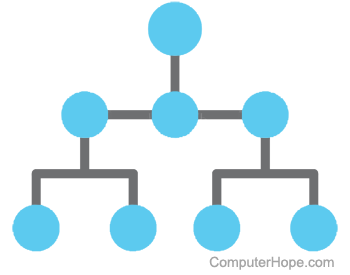Parent and child

A parent and child may refer to any of the following:
1. In general, a parent is a father or mother to a child. More broadly, the "parent-child relationship" is a hierarchy where distinct, connected objects have a logical relationship. A "parent" is something that comes before its "child" or "children" (plural). At the time a child is created, its parent must already exist.
In this structure a child has one parent. However, in a database network model, a child can have multiple parents.
2. With a directory, a parent directory is a directory containing the current directory. For example, in the MS-DOS path below, the "Windows" directory is the parent directory of the "System32" directory, and C:\ is the root directory.

You can use the cd command followed by two periods to move back to the parent directory in all command lines. For example, in the example above, if you were in the C:\Windows\System32 directory and typed cd .., it moves back to the C:\Windows directory.
A parent folder and child folder are synonymous with a parent directory and a child directory. A child directory is commonly called a subdirectory.
3. With a computer process, a child is a sub process of the main parent process. It is common for the parent process to remain active or open until the child process is completed.
4. With nodes, a parent is any node with another node beneath it, called the child node. If the node has no other node below it, it is called a leaf node.
.., Current directory, Directory, Fork, Hierarchical file system, Leaf, Software terms
